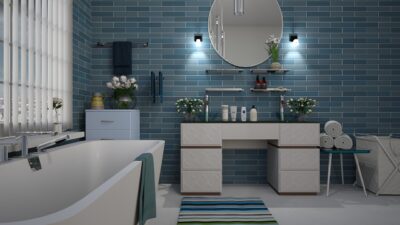Have you ever wondered why your toilet seems to be mysteriously rusting? Well, you might be surprised to learn that it’s not just a sign of age. While the theory that old toilets are more prone to rust is partially true, several other factors could contribute to this problem.
In this discussion, we will explore some common causes of toilet rust, including hard water deposits, leaking pipes, corrosive cleaning products, high humidity levels, improper toilet installation, and external factors. By understanding these potential culprits, you can take the necessary steps to prevent further rusting and ensure the longevity of your toilet.
So, let’s dive in and uncover the truth behind your rusty toilet.
Age of The Toilet
If your toilet is getting older, it is more prone to rusting. The age of your toilet plays a significant role in its susceptibility to rust. Over time, the protective coating on the porcelain surface may wear off, exposing the metal parts underneath. This leaves them vulnerable to moisture, which can lead to rust formation.
Regular toilet maintenance is crucial in preventing rust. One way to maintain your toilet’s condition is to clean it regularly using non-abrasive cleaners. These cleaners help remove any mineral deposits or stains contributing to rust.
Additionally, inspect the toilet tank and bowl for any signs of leakage. Small leaks can create a moist environment, accelerating rust formation. Addressing leaks promptly can help you prevent further damage and prolong the longevity of your toilet.
However, despite diligent maintenance, there may come a time when toilet replacement is necessary. If your toilet is old and continually experiencing rust issues, it may be more cost-effective to replace it rather than constantly repairing it. A new toilet provides a fresh appearance and ensures that you have a reliable and efficient fixture in your bathroom.
If you’re struggling with getting rid of toilet rust, considering a replacement may be a viable long-term solution.
Leaking Pipes
Leaking pipes are one of the many causes of toilet rust. When pipes start to corrode, they can develop small cracks or holes, allowing water to leak out. This constant moisture can lead to rust formation on the toilet bowl or tank, causing unsightly stains and potential damage.
Pipe Corrosion Causes
One common cause of toilet rust is the corrosion of pipes, which can lead to leaks. Pipe corrosion occurs due to a combination of chemical reactions and environmental factors. Here are four ways in which these factors can contribute to pipe corrosion and subsequent toilet rust:
- Chemical reactions: Certain substances present in water, such as dissolved oxygen and minerals, can react with the metal pipes, causing corrosion over time.
- Environmental factors: High humidity levels, exposure to acidic or alkaline substances, and extreme temperatures can accelerate the corrosion process, leading to weakened pipes and eventual leaks.
- Water quality: Poor water quality, containing high levels of impurities or corrosive elements, can significantly increase the likelihood of pipe corrosion.
- Age and wear: Over time, pipes become more susceptible to corrosion due to wear and tear, making them more prone to rust and leaks.
Understanding the causes of pipe corrosion can help you take preventive measures to protect your toilet from rust and potential water damage.
Leaky Plumbing Connections
If you’re experiencing toilet rust, another potential cause to consider is the presence of leaky plumbing connections, which can lead to water seeping into areas where it shouldn’t be. Leaky plumbing connections occur when the joints and fittings connecting the pipes become loose or damaged. Over time, these leaks can cause water to escape and infiltrate surrounding areas, including the toilet.
The presence of water can cause rust to form on the toilet’s surface. It is important to promptly address any leaky plumbing connections to prevent further damage and address this issue. Hiring a plumber to perform necessary plumbing repairs can help eliminate the problem’s source and prevent further water damage to your toilet and other areas of your home.
Corrosive Cleaning Products
Using corrosive cleaning products can contribute to the development of rust in your toilet. While these products may promise a deep clean, they can cause more harm than good. Here are four reasons why you should reconsider using corrosive cleaning products and explore alternative cleaning methods:
- Damage Prevention: Corrosive cleaning products contain strong chemicals that can eat away at the protective coatings on your toilet’s surfaces. This can leave your toilet vulnerable to rust formation. By opting for gentler cleaning solutions, you can help preserve the integrity of your toilet and prevent future rusting.
- Health Concerns: Corrosive cleaning products often emit strong fumes that can be harmful to your respiratory system. Breathing in these chemicals can irritate your lungs and worsen existing respiratory conditions. Choosing alternative cleaning methods that use natural or non-toxic ingredients can help safeguard your health while keeping your toilet clean.
- Environmental Impact: Harsh cleaning products not only pose risks to your health but also to the environment. The chemicals in these products can contaminate waterways and harm aquatic life. By switching to eco-friendly cleaning alternatives, such as vinegar or baking soda, you can reduce your ecological footprint and contribute to a cleaner, healthier planet.
- Cost-effectiveness: Corrosive cleaning products can be quite expensive, especially if you need to use them frequently. On the other hand, alternative cleaning methods often involve common household items that are more affordable and readily available. Making the switch can save you money in the long run without compromising on cleanliness.
Improper Toilet Installation
Improper toilet installation can be a significant cause of toilet rust. When your toilet is not installed correctly, it can lead to various issues that contribute to rust formation. Here are some common mistakes to avoid and prevention tips to keep your toilet rust-free:
- Incorrect flange alignment: If the toilet flange is not aligned properly with the drainpipe, it can create gaps where water and moisture can seep in. This trapped moisture promotes rust formation over time. To prevent this, ensure that the flange is aligned correctly before securing the toilet.
- Loose connections: Loose connections between the toilet tank, bowl, and water supply line can result in water leaks. These leaks can cause continuous moisture exposure, leading to rust. Ensure all connections are tight and free from leaks during the installation process.
- Improper sealing: Inadequate sealing between the toilet base and the floor can allow water to seep underneath, creating a breeding ground for rust. Use a proper wax ring or sealing gasket to form a watertight seal between the toilet and the floor.
- Using incorrect materials: Using incorrect or low-quality materials during the installation can increase the chances of rust formation. Always use corrosion-resistant materials, such as stainless-steel bolts and nuts, to prevent rust and ensure the longevity of your toilet.










